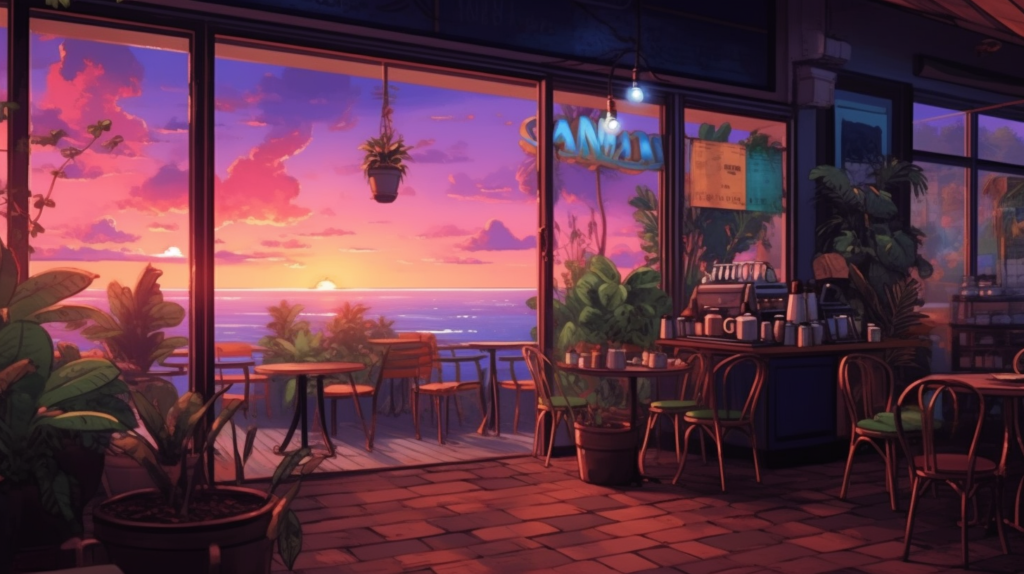
Welcome to our ultimate guide on creating lofi guitar loops! If you’re a music producer, you know that guitar loops are essential to creating that unique lofi sound. In this article, we’ll explore various techniques and tricks for crafting beautiful lofi guitar loops. Get ready to elevate your lofi music production game!
Finding Your Lofi Guitar Sound
Before we dive into creating guitar loops, let’s talk about the lofi guitar sound. This is the foundation of your loops, so it’s crucial to get it right.
First, choose a guitar that suits your style. A nylon-string acoustic or an electric guitar with single-coil pickups will give you a warm, smooth sound that’s perfect for lofi music production. Experiment with different guitars to find the one that resonates with you.
Next, consider using effects to enhance your lofi guitar sound. Reverb, chorus, and a touch of distortion can all add depth and texture to your loops. Don’t go overboard, though – subtlety is key.
Lastly, dial in the right guitar tone. Aim for a mellow, slightly detuned sound that evokes nostalgia and emotion. Remember, the goal is to create an atmosphere, not to showcase technical prowess.
3 Guitars Commonly Used in Lofi Music
Choosing the right guitar for your lofi music production can make all the difference in achieving that signature sound. Here are 3 guitars commonly used in lofi music:
- Fender Telecaster: Known for its bright, warm tone, the Telecaster is a versatile electric guitar that lends itself well to lofi music.
- Fender Stratocaster: With its smooth, mellow sound and single-coil pickups, the Stratocaster is another popular choice for lofi producers.
- Gretsch G5420T Electromatic: This hollow body electric guitar delivers a warm, vintage sound that’s ideal for crafting lofi guitar loops.
Remember, the best guitar for your lofi music is ultimately the one that inspires you and resonates with your personal style. Don’t be afraid to try out different guitars and find the one that helps you create the perfect lofi guitar loops.
Crafting Lofi Guitar Chord Progressions
Now that you’ve found your lofi guitar sound, it’s time to create chord progressions. These are the building blocks of your guitar loops, and they’re essential to setting the mood for your lofi music production.
When crafting chord progressions, consider using extended chords like 7th, 9th, and 11th chords. These add harmonic richness to your loops and make them more interesting. Don’t be afraid to experiment – lofi music is all about breaking the rules!
As you work on your progressions, think about the emotions you want to convey. Do you want your listeners to feel nostalgic? Melancholic? Relaxed? Use your chords to tell a story and evoke the desired feelings.
10 Guitar Chord Progressions Commonly Used in Lofi Music
A chord progression is a sequence of chords, and in the world of lofi music, the right progression can make your tracks truly captivating. Here are 10 guitar chord progressions commonly used in lofi music:
- Am7 – Dm7 – Gmaj7 – Cmaj7: This progression is soothing and mellow, perfect for creating a relaxed atmosphere.
- Fmaj7 – Em7 – Dm7 – Cmaj7: The movement in this progression gives it a nostalgic feel that’s well-suited to lofi music production.
- Bm7 – E7 – Amaj7: This progression’s slightly melancholic tone can give your guitar loops a unique emotional depth.
- Cmaj7 – Gmaj7 – Fmaj7 – Em7 – Am7: The constant motion in this progression can lend a sense of wistfulness to your tracks.
- Dm9 – G13 – Cmaj9 – Fmaj13: The use of extended chords in this progression can add complexity and interest to your lofi guitar loops.
- C#m7 – F#m7 – B7 – E: This progression’s slightly somber tone makes it a great choice for more introspective tracks.
- Gmaj7 – F#m7 – Bm7 – Em7: The smooth transition between these chords can give your guitar loops a soothing, relaxed vibe.
- Am7 – D7 – Gmaj7 – Cmaj7#11: The unexpected #11 in the last chord adds an interesting twist to this progression.
- F#m9 – B13 – Emaj9 – A13: The jazzy feel of this progression is perfect for creating guitar loops with a sophisticated vibe.
- Cmaj7 – Am7 – Dm7 – G7 – Em7 – A7 – Dm7 – G7: Known as the circle of fourths, this progression creates a sense of constant motion that can keep your listeners engaged.
Remember, when it comes to crafting chord progressions, the sky’s the limit! Don’t be afraid to experiment with different chords and progressions to find the ones that perfectly express your unique musical vision.
Recording Your Lofi Guitar Loops
With your chord progressions in place, it’s time to record your guitar loops. Here are a few tips to help you capture the perfect lofi vibe:
- Play with feel: Lofi music is about raw emotion, so don’t be afraid to let your playing be a little loose. Imperfections can add character to your loops.
- Experiment with picking techniques: Fingerpicking, hybrid picking, and using a pick can all yield different results. Try various techniques to find the one that suits your style.
- Vary your dynamics: Playing with different levels of intensity can make your guitar loops more engaging. Use dynamics to create contrast and keep your listeners hooked.
Once you’ve recorded your loops, it’s time to move on to loop manipulation.
Loop Manipulation Techniques
Manipulating your guitar loops is crucial for achieving that distinct lofi sound. Here are some techniques to help you get started:
- Pitch shifting: Altering the pitch of your loops can add depth and complexity to your tracks. Try pitching your loops up or down by a few semitones.
- Time stretching: Changing the tempo of your loops can create interesting rhythmic effects. Experiment with different tempos to find the perfect groove.
- Chopping and rearranging: Cutting your loops into smaller pieces and rearranging them can lead to new and unexpected patterns. Get creative and see what you can come up with!
- Layering: Combining multiple loops together can result in a richer, fuller sound. Try layering loops with different textures and tones to create a unique sonic landscape.
- Effects processing: Don’t be afraid to experiment with various effects, like delay, saturation, and modulation. These can add character and interest to your guitar loops.
With these techniques in your arsenal, you’re well on your way to creating amazing lofi guitar loops. Remember, experimentation is key – don’t be afraid to break the rules and push boundaries!
Cheatsheet for Producers
| Technique | Tips |
|---|---|
| Finding Your Lofi Sound | Choose a suitable guitar, use subtle effects, and dial in a mellow, detuned tone. |
| Crafting Chord Progressions | Use extended chords, experiment with different progressions, and convey emotions. |
| Recording Guitar Loops | Play with feel, experiment with picking techniques, and vary your dynamics. |
| Loop Manipulation | Try pitch shifting, time stretching, chopping and rearranging, layering, and effects processing. |
Now that you’re equipped with these techniques and tricks for creating lofi guitar loops, it’s time to get started on your next music production project. Remember, the key to success is experimentation and creativity – so don’t be afraid to think outside the box and make your lofi music truly unique!





